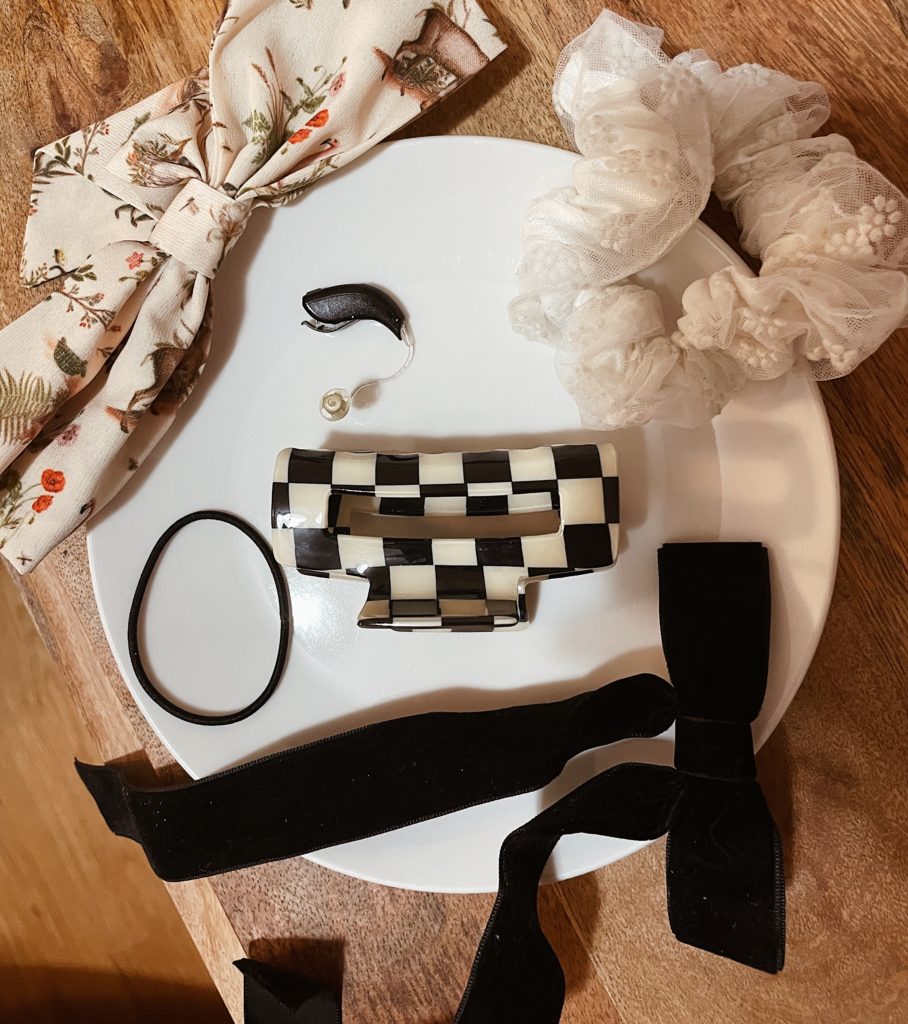“Assistive Technology: Oticon More Hearing Aids” by Brianna Stamm
The Oticon More hearing aid is an assistive technology designed for people with hearing loss or deafness. Oticon describes this particular model as a “revolutionary hearing aid designed to work like your brain, because it learned through experience”. The online gallery touts the offering phrase- “you can get more out of life.” The problematic connotations of “more” imply that what a person with hearing impairment is receiving in life is not enough. They are deprived, deficient, and lacking. Oticon assures this quality through technology that “allows the brain to work in a more natural way”. Further implications that the user, by default, is unnatural or abnormal. Their negligence in language in conjunction with a failure to understand various lived experiences, shows that the Oticon More’s utility, usability, and affordability are dismal. As a user of Oticons myself, I have gripes and criticisms that trump vanity with validity.
Hot girls wear hearing aids too. We’re here, assistive technology in, wearing ponytails in the style of Constitution drafters. Our luscious locks, pinned back and above like we just threw English breakfast tea in the harbor. We are everywhere, passing as “Oticon normal”; but we are also lurking on subreddits and forums, wishing for a world where our curtain bangs can frame our face effectively. Young people with long tresses, desiring to be heard as we desire to hear.
Long hair interferes with how modern-day hearing aids like the BTE (behind the ear) Oticon More function. When longer hair touches or surrounds the hearing aid, it begins to malfunction creating a new index of sound similar to static television. The thickness of this model also forbids hair from being placed behind the ear. This is problematic because instead of turning off, the hearing aid amplifies the disruptions into the user’s ear. Because commodification in disability is prioritized over design, no one has addressed this properly. Hearing aid brochures are painted with the elderly; reclining on lawn chairs, playing with grandchildren. But we have come of age at the end of the world and statistically owning property and birthing are not guaranteed. So where are the brochures with hot girls on dates? Hot girls singing Alanis karaoke at bars? There are none- because I’ve got one hand in my pocket and the other ones fixing my hearing aid.
Current BTE technology seems catered to a more sedentary generation. Even today after decades of innovation, I still rely heavily on reading lips in a majority of experiences. The Oticon More model fails significantly in most city atmospheres; streets, the workplace, bars, restaurants, and other public places. Although it claims to work with the brain, it often picks up taxi honks, and dropping silverware more than the other end of a conversation. Although Oticon may see me as an anomaly- young hearing aid users exist despite not being reflected in literature.
Information on younger hearing aid users is lacking; multiple data points group ages in categories such as “12 age or older” and “18-69”. A number of statistics neglect younger generations and begin in the mid forties range. Finding specific data sets on young hearing aid users is nearly impossible; this decreases the ability for a young user to research and hinders desirability.
The desirability to use hearing aids in the 20-30 age group may also be affected by the price point of hearing aids. If not covered by insurance, an Oticon device will run you between 1,262 to $3,663. And if you have bilateral hearing loss, the price point doubles.
If you are not dissuaded by the price point, but are frustrated by the hair dilemma, another option provides “in-the-ear hearing aids developed for ultimate discreteness”. The Oticon Own model comes in multiple styles and is designed to be placed in the ear. Although these are still triggered by hair movement, and amplify the hair sounds-you would be able to tuck some strands behind your ear. The Own model increases the pressure to pass as abled and to be socially accepted as “normal”. This attitude manifests in many forms including “mainstreaming” in education. The desire to conceal one’s disability lies within a medical model of disability; implying that there is something inherently wrong with the person and that their quality of life is being diminished. I do not want to conceal my disability. Instead I want; DryBar blowouts falling below my shoulders, for men to stop leaning in for a kiss when I read their lips, for doctors to stop over pronouncing words, distorting their lips so I understand even less, and for Oticon to stop telling me I am not enough.
